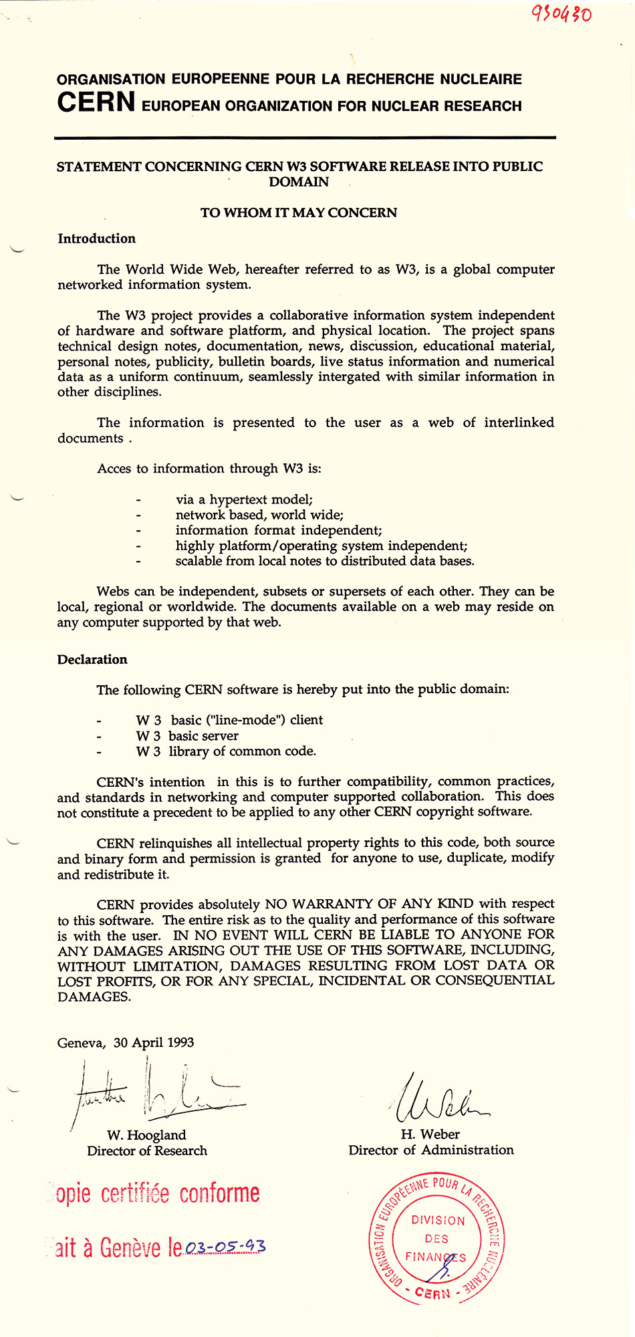
At 30 years old, the World Wide Web already ranks as the most disruptive invention. Developed at CERN in the early 1990s, it has touched practically every facet of life, impacting industry, penetrating our personal lives and transforming the way we transact. At the same time, the web is shrinking continents and erasing borders, bringing with it an array of benefits and challenges as humanity adjusts to new digital world. On 30 April 1993, CERN released this memo that placed into the public domain all of the web’s underlying software: the basic client, basic server and library of common code. The document was addressed “To whom it may concern” – which would suggest the authors were not entirely sure who the target audience was. Yet, with hindsight, this line can equally be interpreted as an unintended address to humanity at large.
In the early years, the openness resulting from this requirement for transparency was essentially delivered through traditional channels, in particular through publication in scientific journals. Over time, this became the cultural norm, permeating all aspects of work both internally and with its collaborating partners and society at large. CERN’s release of the WWW software into the public domain, arguably in itself a consequence of the openness requirement of the Convention, could be seen as a precursor to today’s web and mobile based tools that represent further openness: the SCOAP3 publishing model, open-source software and hardware, and open data. If CERN would have known then what it knows now about the impact of World Wide Web, would it still have made it open source, just as it did in 1993?
Now for example, one legal doctrine, antitrust law, claims to deal directly with problems of digital app / data monopolies? Antitrust needs to evolve for democratic Internet marketplaces. Diktats like traceability requirement under some Guidelines / Digital Media Ethics Code may compel private end-to-end encrypted messaging services to enable the identification of first originator of information on their platforms and direct these big data pipelines to dashboard of state’s PPP profiteering allies & their branded projects.

